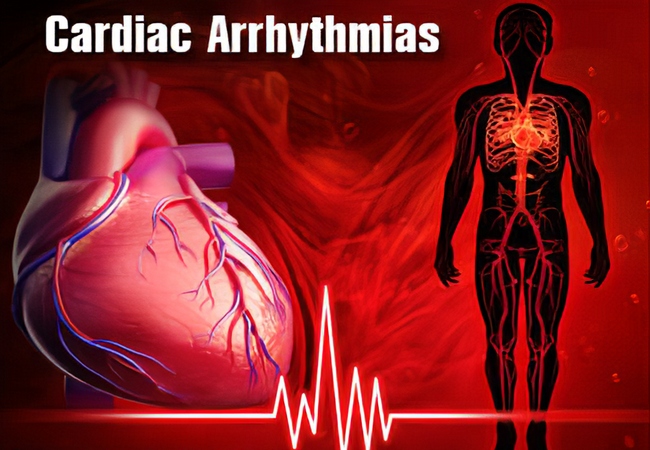Evaluation or Assessment of Cardiac Arrhythmia Patient in ICU:
1. Assess for and report signs/symptoms of cardiac arrhythmias (e.g. irregular apical pulse, adult pulse rate below 60 or above 100 beats/ minute, apical- radial, pulse deficit, syncope, and palpitations).
2. Reduce cardiac workload:
- Position patient to minimizes discomfort and facilitate respiration.
- Minimize anxiety with calm reassurance and education.
- Communicate rationale for monitoring and treatments.
- Discuss the benefits calm with the patient and family.

3. Initiate EKG monitor and pulse oximetry per policy.
4. IV access, 02, medication and 12 lead-EKG as ordered monitor vital signs:
- Positive inotropic agents (e.g. dobutamine, dopamine) to increase myocardial contractility,
- Vasodilators (e.g. nitroglycerin) to decrease cardiac workload,
- ACE inhibitors (e.g. captopril, ramipril) to decrease cardiac workload,
- Diuretics for elevated capillary wedge pressure,
- Morphine sulfate to reduce pain, preload and anxiety.
5. Anticipate the need to initiate cardiopulmonary resuscitation.
6. Assess for contributing factors: pain, fluid and electrolyte imbalance, drug toxicity (especially digoxin), medication non-adherence.
7. Provide psychosocial support for patient and family members:
- If the dysrhythmia is a life-threatening type, encourage the family unit to calmly formulate a plan of action.
- Reassure the patient will receive the best care in keeping with his written directives or medical power of attorney.
- Communicate the availability and value of social services as needed.
8. Patient teaching:
- Importance of reporting chest pain, dyspnea, loss of consciousness, confusion, etc.
- Educate and prepare patient for planned treatments such as: Echo-cardiogram, Cardioversion, Pacemaker insertion, Catheter ablation, and Central Venous Catheter insertion.
9. Wellness teaching includes: smoking cessation, stress reduction, weight reduction, hear healthy diet, drug regimen, relaxation as well as home blood pressure, pulse and weight monitoring.
What are the Investigations Required for Cardiac Arrhythmia?
The following tests may be ordered:
- Blood and urine tests: These will check the patient’s blood count and liver, thyroid, and kidney function. They may also check for electrolytes and other chemicals.
- ECG (electrocardiogram): This device records the electrical activity and rhythm of the patient’s heart.
- Holter monitor: A wearable device that records the heart for one or two days. A button can be pressed which symptoms arrive this allows the doctor to see what heart rhythms were present at that moment.
- Echocardiogram: An ultrasound scan that checks the pumping action of the patient’s heart
- Chest X-ray: The images help the doctor check the state of the patient’s heart and lungs.
- Tilt-table test: If the patient experience fainting spells, dizziness, or lightheadedness, and neither the ECG nor the Holter revealed any arrhythmias, a tilt-table test may be performed.
- Electro physiologic testing (or EP studies): An invasive, relatively painless, non- Surgical test that can help determine the type of arrhythmia, why it is happening, and how it might respond to treatment.
- Heart Catheterization: This procedure provides information on how well the heart is working. A thin, hollow tube called a catheter is inserted into a large blood vessel, usually in the groin. It is a relatively safe procedure.

Maria Khatun Mona is a Founder and Editor of Nursing Exercise Blog. She is a Nursing and Midwifery Expert. Currently she is working as a Registered Nurse at Evercare Hospital, Dhaka, Bangladesh. She has great passion in writing different articles on Nursing and Midwifery. Mail her at “maria.mona023@gmail.com”

Good post!